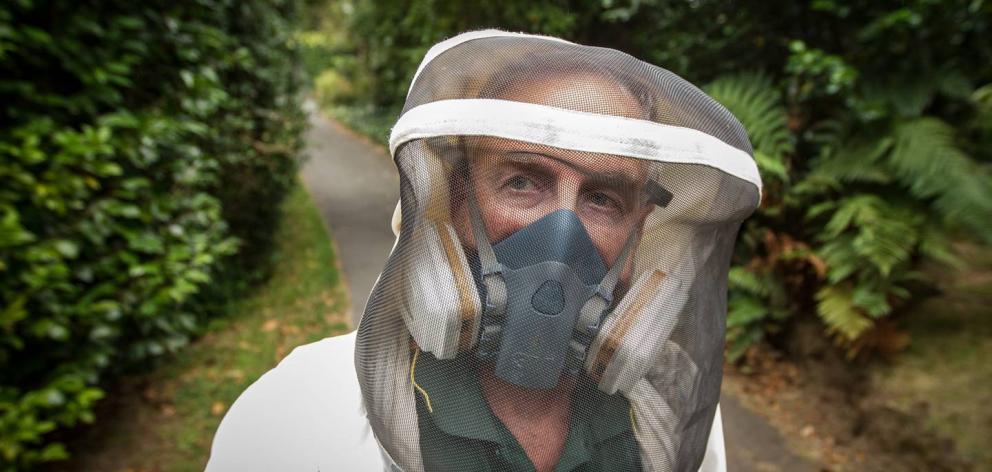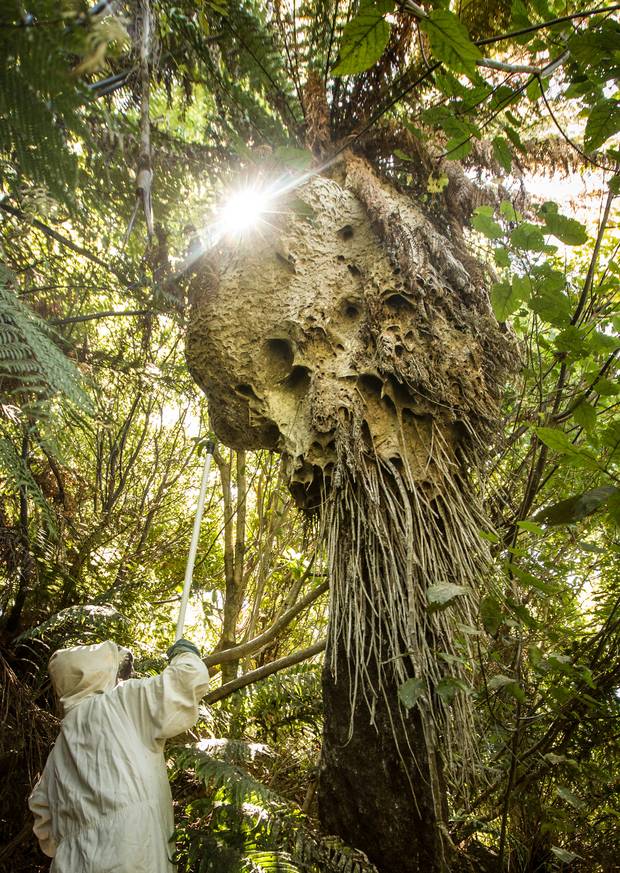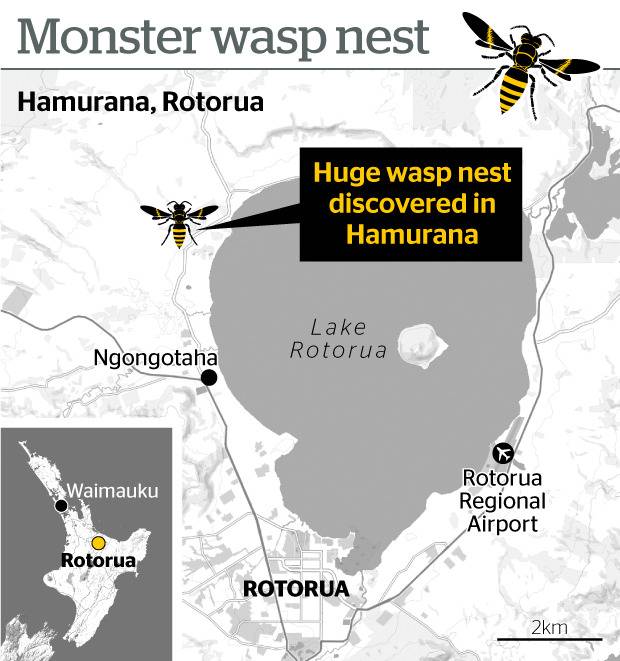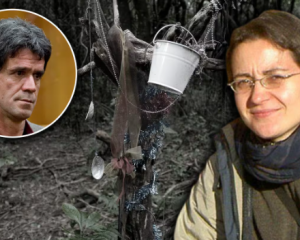Wasps from a monster nest in Hamurana are just not buzzing off as exterminators enter their fifth day of trying to kill the pests.
Bay Pest Services owner-operator Chris Brunel said the stubborn nest - belonging to German wasps; a particularly nasty and aggressive species - was about 2m wide and 2m tall and needed a third dose of poison yesterday.
He said it was the biggest nest he had seen in his 30 years in the industry.

Brunel said there were about 70 per cent less wasps than there were on Tuesday and "hundreds of thousands" covered the track.
"It's a bit of carnage," he said, "but the birds will swoop in and clean it up ... they won't be affected by the poison though."
The two-man crew chopped a section of the nest to re-poison it and were thankful neither of them were stung, unlike Monday and Tuesday.
Brunel estimated a nest that size would house well over a million wasps.
Brunel hoped to take the nest down today but this depended on the weather as the high position, steep slope, and scale of the nest would be limiting, as well as getting to the location.
Manaaki Whenua Landcare Research researcher Dr Bob Brown said this was "definitely a whopper of a nest".
German wasp colonies had about a 10 per cent chance of surviving through the winter.

He said the Hamurana nest would have taken about 16 months to reach that size and as climate change progresses, people could expect to see more nests of that size.
Brown said German wasp colonies would usually grow to fit inside a 20l bucket and weigh 4 to 5kg at the end of the season.
He said a single nest required a lot of protein with honeybees and their honey a preferred food source.

Large nests could be thought of as a group of normal size nests, Brown said, since there were actually several queens.
"I haven't heard of these large nests continuing through a second winter, probably because the nest grows so large that the pheromonally controlled social structure breaks down," he said












